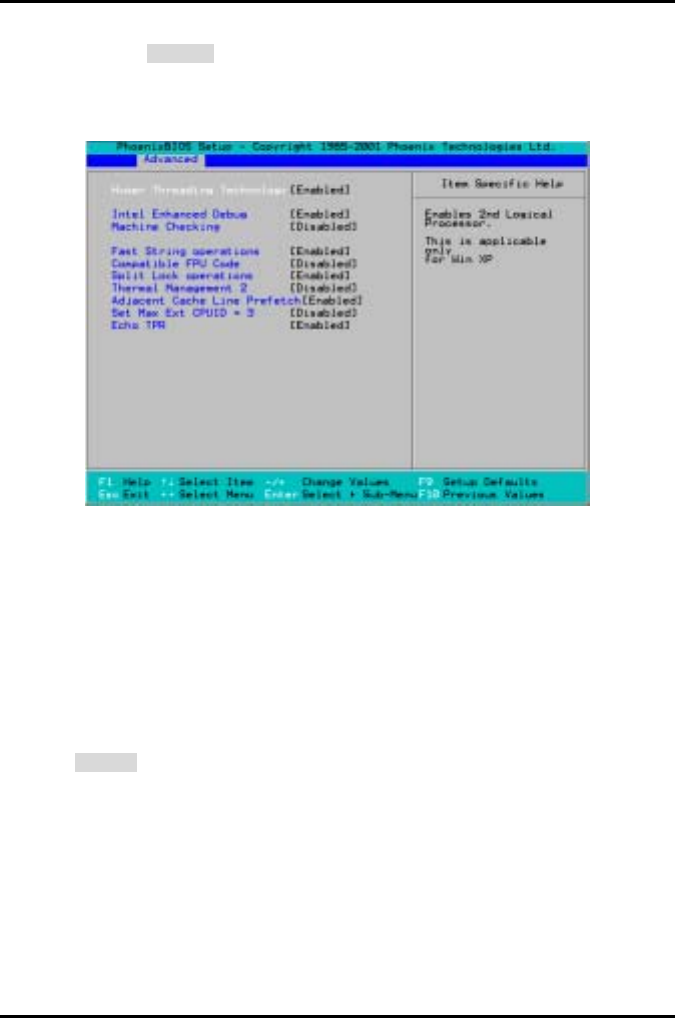
Tiger i7320 S5350 Chapter 3: BIOS Setup
3-13
http://www.tyan.com
Option ROM Scan
Initialize device expansion ROM
Enabled / Disabled
3.4.3 Advanced Processor Options
This section allows you to fine-tune the processor options.
Hyper Threading Technology
Enable this only if you have an Intel Hyper Threading processor.
Hyper-Threading Technology enables multi-threaded software applications to execute threads
in parallel. Hyper-Threading Technology provides thread-level-parallelism (TLP) on each
processor resulting in increased utilization of processor execution resources. As a result,
resource utilization yields higher processing throughput. Hyper-Threading Technology is a
form of simultaneous multi-threading technology (SMT) where multiple threads of software
applications can be run simultaneously on one processor. This is achieved by duplicating the
architectural state on each processor, while sharing one set of processor execution resources.
Hyper-Threading Technology also delivers faster response times for multi-tasking workload
environments. By allowing the processor to use on-die resources that would otherwise have
been idle, Hyper-Threading Technology provides a performance boost on multi-threading and
multi-tasking operations for the Intel NetBurst® microarchitecture.
Enabled / Disabled
Thermal Management 2
Thermal Management throttles the processor back as it reaches its maximum operating
temperature. Throttling reduces the number of processing cycles, thereby diminishing the heat
dissipation of the CPU. This cools the unit. Once the CPU has reached a safe operating
temperature, thermal throttling is automatically disabled, and normal full speed processing
begins again.
The BIOS supports two types of thermal management.
• Thermal Monitor 1: Thermal Monitor 1 uses a highly accurate on-die temperature
sensing circuit in the CPU that has the ability to act quickly upon any thermal issues
(~50ns). This circuitry keeps an eye on the most taxed areas of the CPU-die at all
times and will quickly act upon temperatures going over the safety limits. The


















